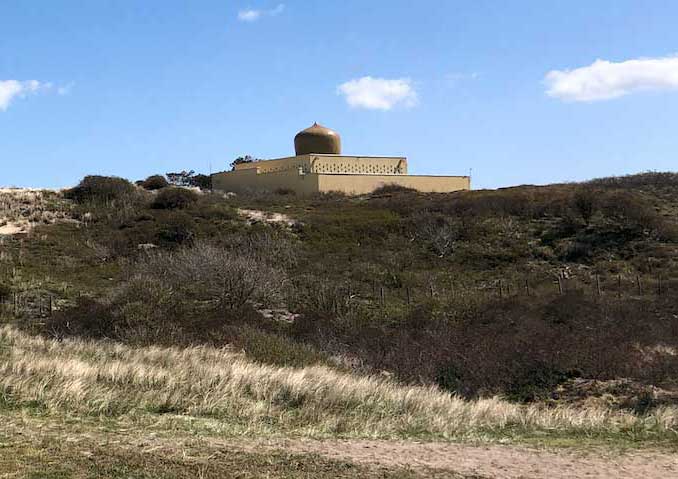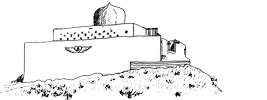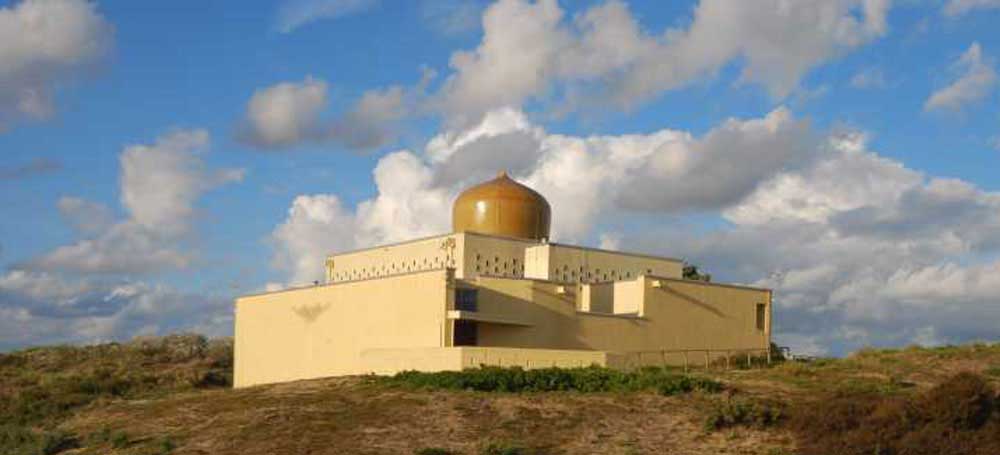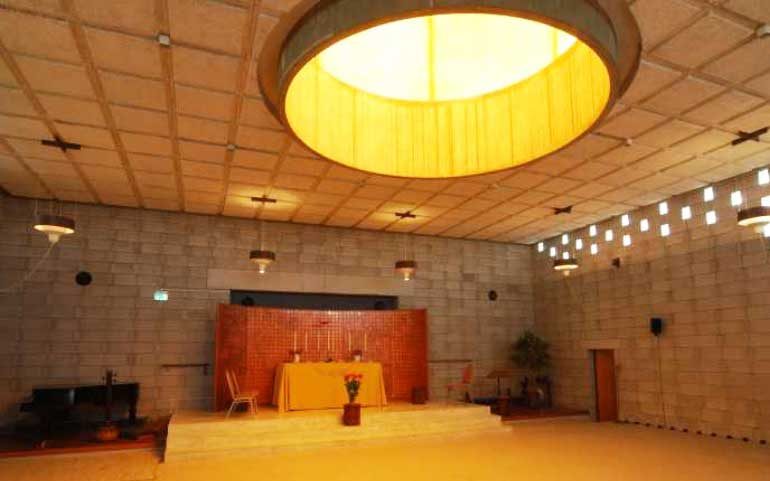The Sufi Temple Murad Hassil, built in 1970 in the dunes of Katwijk, is an eye catcher, both from land and from the sea. It is a building with a remarkable history. The name of the Temple already points to this. Murad Hassil means wish fulfilled. The building is situated in a special place. Indications have been found that in Roman times a Temple already existed there: a Temple for Apollo. Fact is that the Indian mystic Hazrat Inayat Khan felt attracted to this place and went through an extraordinary experience when he was meditating there in 1922. Inayat Khan hosted a summer school in Katwijk that year. Offering all manner of teachings and exercises he devoted himself to translate the wisdom of the eastern Sufism to the modern western culture. One afternoon he retired in the dunes and when he came back he was radiant. He told nobody about his experience, except that we should honour this place and call it Murad Hassil, wish fulfilled. A Temple of the same name should be built, were everybody should be welcome – a universal Temple, or in his words: a Universel. Whoever had a heartfelt wish should be able to find fulfilment in this place.
the Hall
The Temple is a square building, with a big hall of 13 by 13 meters. The square depicts stability and power. On the roof sits a gold coloured dome. This symbolizes the human heart that, when it is oriented towards heaven, opens itself to the divine light. Because of the self-supporting structure of the roof the dome seems to float in space. Because the dome is somewhat transparent, the hall bathes in gold-coloured light. There are no windows, the light falls in through bricks of glass in the walls. This creates a meditative atmosphere, that invites one to reach inside, to the heart.

Prayer for the Universel, sung by Saki Lee,
Lyrics from a prayer of Hazrat Inayat Khan, Music: Nizamuddin Mason, Arrangement: Maarten Ophiel van Leer, Video: Lujo Shanawaz van Gestel
Dune
During the building of the Temple much attention was given to the protection of the fragile dune terrain. A meditation path goes round the valley in which Inayat Khan had his mystical experience. There is also an amphitheatre in the open air that looks out on the Temple, on the symbol of Universal Sufism that adorns that side of the Temple: a heart that is carried by two wings.
The dune valley where Inayat Khan had his experience is now a place of silence where you can meditate. Concealed in another dune valley on the grounds is a second building, which was built later: the Wakilhouse. In consists of a dining hall and the dwelling of the caretakers.
Architect
The architect of the Temple was prof. ir. Sam van Embden (1904 – 2000). With his company OD205, situated in Delft, he is mostly known for urban planning. His company has designed buildings for universities in Delft, Eindhoven, Twente and abroad. The Temple is the only religious building he designed. Van Embden knew how to build a bridge between traditional and modern architecture. The Temple is characterized by the use of sober concrete building blocks, that are covered by a yellow isolating layer on the outside. Copper and wood give the interior a special emphasis.



